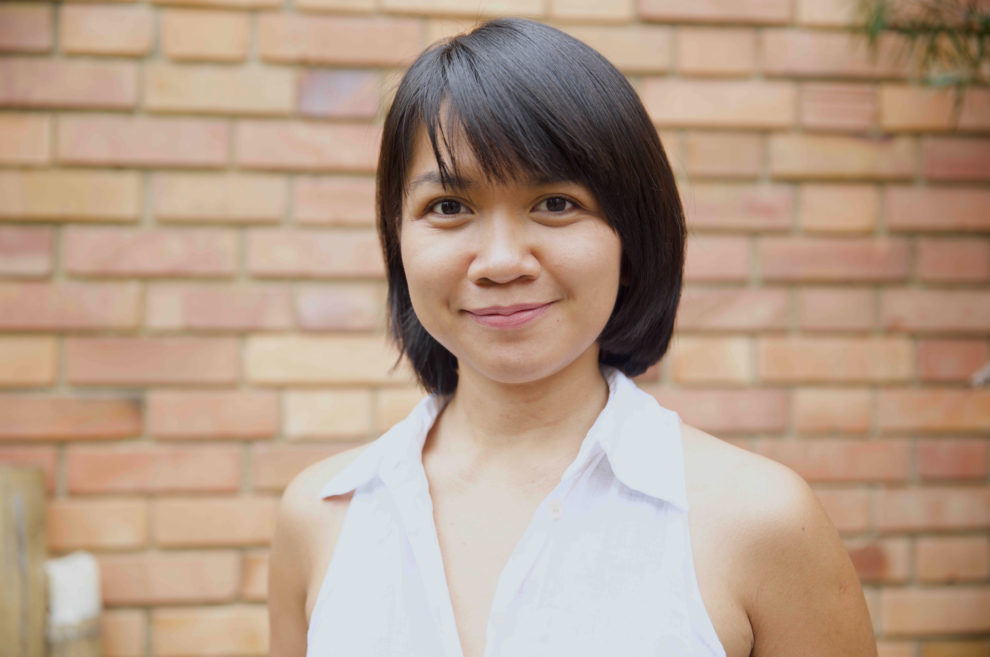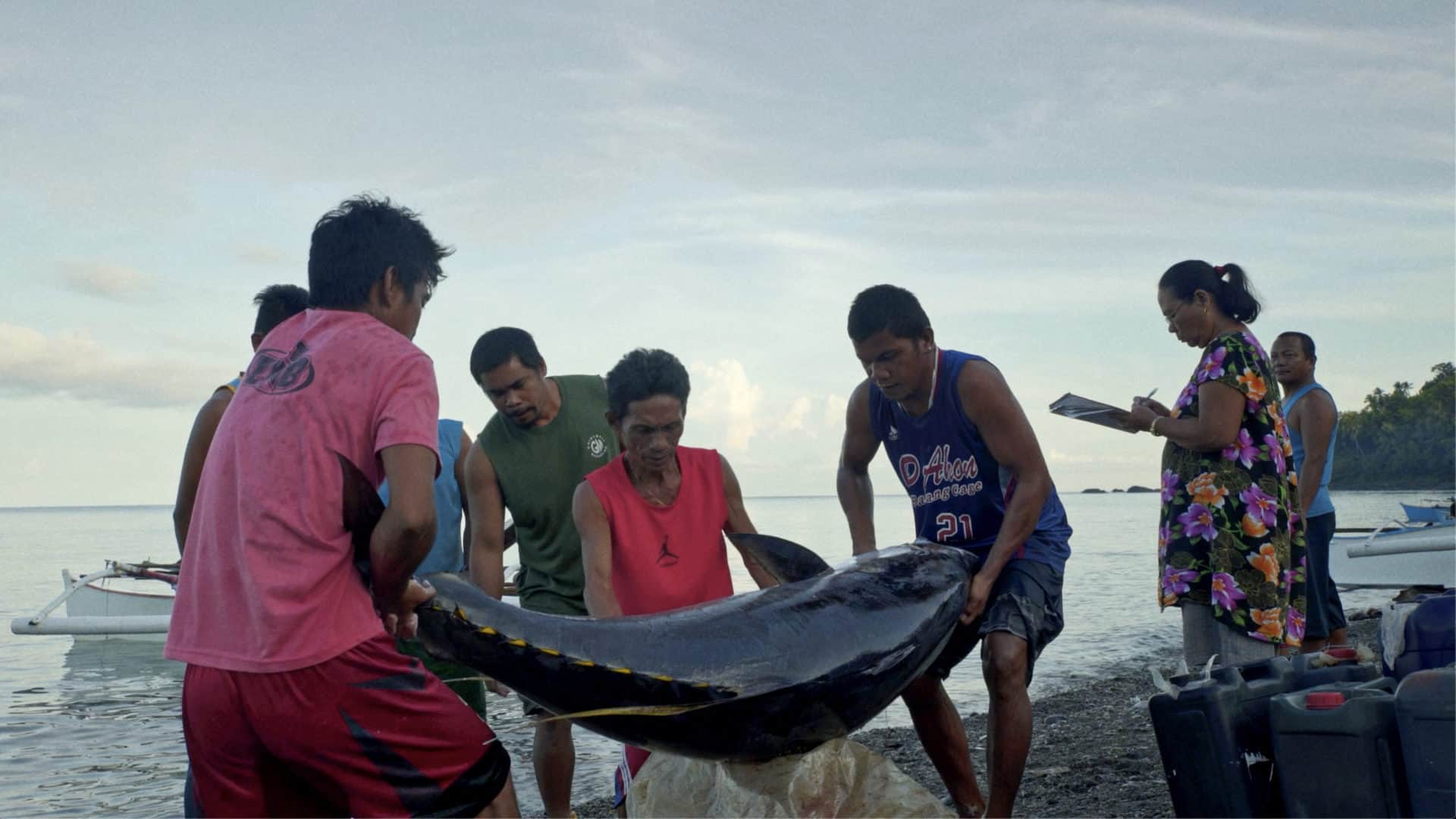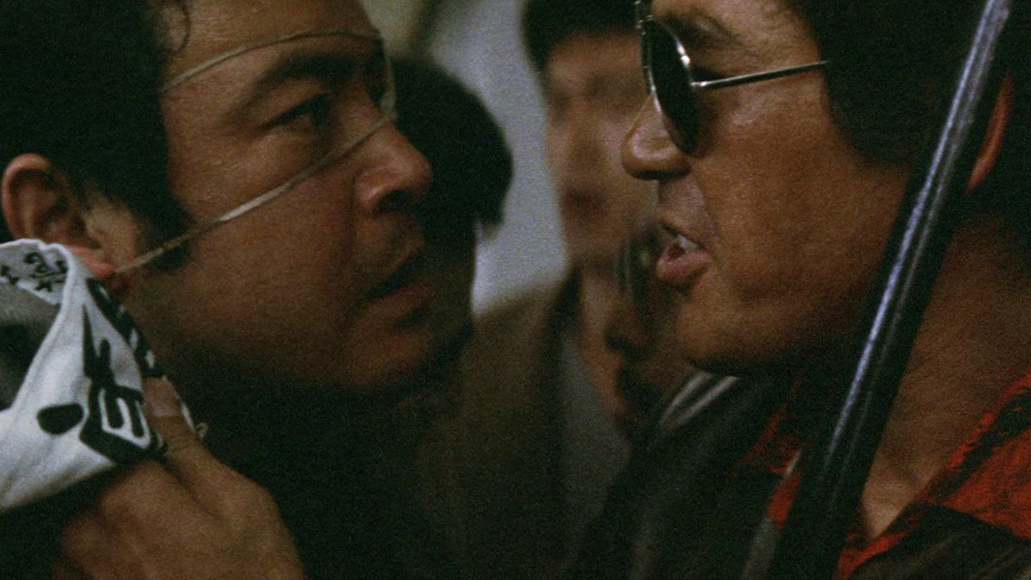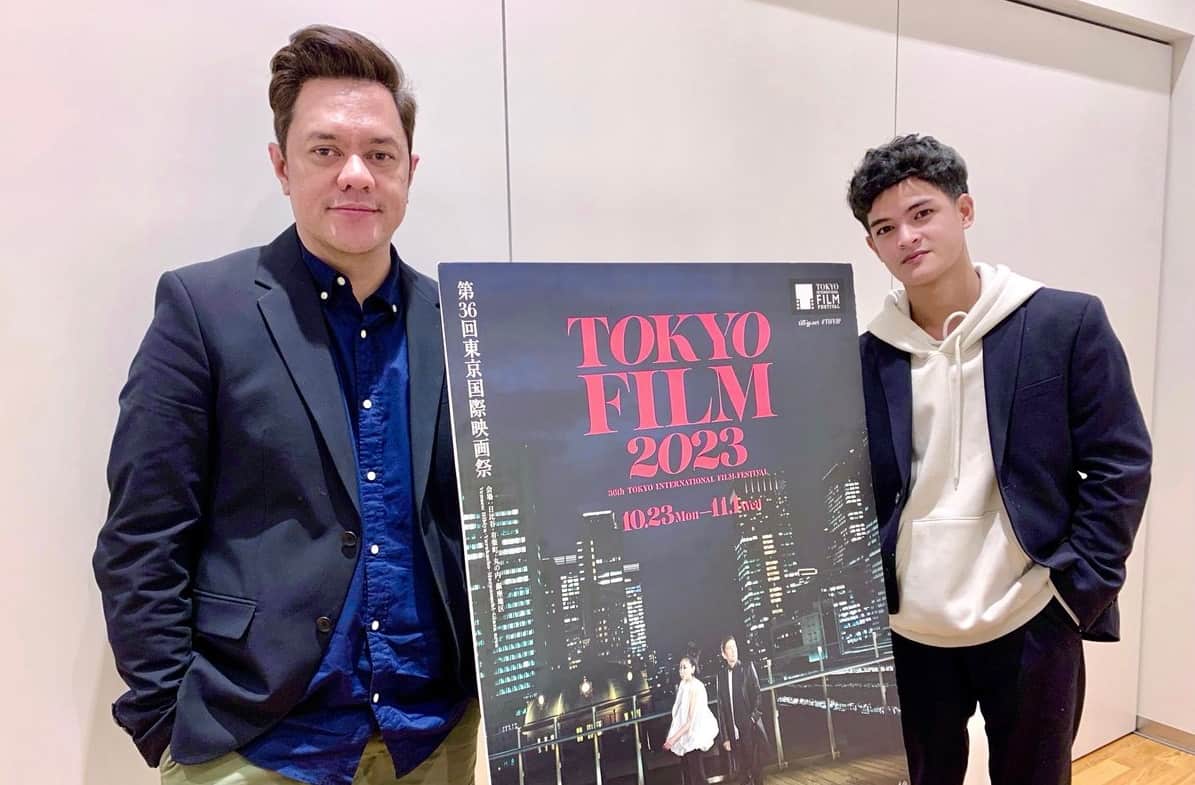The Filipino documentary filmmaker was born in 1989. In her work, she is particularly interested in examining how transformations in life can be effected by mundane everyday actions. An alumna of the European Doc Nomads programme, she co-founded Svemirko Film Productions with Taiwanese director and producer Fan Wu in order to create a platform for author-driven documentary films. Last Days at Sea is her first feature-length film.
On the occasion of “Last Days at Sea” screening at Berlinale, we speak with her about shooting her first feature, the concept of the documentary, Reyboy and Karihatag, Jollibee fries and the memories of sea slugs.

My first question is a bit silly. When I was watching the film, I was actually really hungry. So, what stuck in my mind is if these Jollibee fries Reyboy likes so much are any good?
(laughs) It actually is. Jollibee is the Filipino version of McDonalds, I would say. For example, if you live in another country, Jollibee is what you are searching for, because it reminds you of home. The spaghetti there, is a Filipino style spaghetti, the French fries are kind of Filipino style, chicken is the same. I also like Jollibee fries actually. It is not dense, as I said in the beginning of the film. You should try it.
This is your first feature film. What do you think was the biggest difference between shooting a feature and a short?
The relation with time is different, the fact that various aspects of the movie have to develop at a pace. The most difficult part for me was not hurrying to say everything at once or to show everything at once and to give time to the film to unfold. For example, in “Last Days at Sea” my relationship with Reyboy takes time. I have only made three shorts films before and those were just about a small time frame, like an afternoon. However, this time, the film unfolded over an extended number of days, so I also had to keep it mind that time is passing. It sounds a bit immaterial, or something the viewer does not notice, but we had to make this passing of the time something you feel in the film, within the 72 minutes of its duration.
Would you say it was more difficult though?
I would say it is different. Now, for example, I am thinking that the film took so long to complete, because we started in 2018 and we finished just now. Just thinking of the time it took, it makes me think that this was such a difficult task.
Why did you choose Karihatag to shoot the film?
I think it was more about the people. Even from before, I wanted to make a film about Reyboy and the rest of the people living in the area, about the way they survive the storms. Storms in Philippines are quite disastrous, I have seen trees falling in front of my house, but I can only imagine how it was for them. When I found out that they were able to survive storms and to build a sanctuary for fish, I was very interested in the ways they were able to maintain this, even if they did not have enough resources. This was something I was initially interested in, but there was also something about these people; they knew a lot about the world, and I was curious about that. Even kids, like Reyboy, they knew a lot about how to deal with life in terms of specific survival skills and also the way treated strangers (me in this case) how t,hey spoke about their home. That really drew me to them.
How long did you stay there for?
In my first encounter with Karihatag, I went there on two different occasions. One in 2014 and one in 2015, for about a week each. In 2018, when I decided to make the film, I also went twice, the first time for a week and the second time for 12 days.
How would you describe Karihatag?
The first word that comes to mind is paradise, but the situation there is like a coin with two sides. It is like paradise in the summer, but when the rainy season comes, the other side of the coin shows, which is very difficult. When we were leaving, it started to rain and the only way to leave the place was by boat. When it rains though, the sea becomes very rough, and you realize that it is not always a paradise there.
It has not become a resort or anything like that though, right?
No. It is very isolated, it is a very small village in the foot of a mountain and there is a river you have to cross in order to get there, so when it is raining a lot, the river swells, so you cannot actually reach it.
How difficult was putting these people in front of the camera? Did you have any trouble in that regard?
Not at all. They were very curious, most of the time they would ask me questions and they were eager to show me various aspects of their life, like how they prepare the boat, or if they caught a big fish etc. They would offer. I think the thing that could have been difficult would be if I just wanted to observe them from a distance, if I was to say to them to not mind me. This would just not happen (laughs). They would always talk to me when I was behind the camera. Furthermore, in the beginning, Reyboy told me that he was not so comfortable being filmed from afar. He told me that if I wanted to film him, it would be better to be close to each other. He did not like the feeling of being observed. He enjoyed, though, showing something to the camera or interacting with me. This whole aspect was really crucial in the way Karihatag and the people there were shown in the film.
So, they trusted you from the beginning, you did not have any issue making them open up? I am asking because some of the things they say on camera are quite personal, about their families and homes.
Yes, they did. The thing is, we were not shooting all the time. We were there for about 20 days and we only have less than 60 hours of footage. Because most of the time, we were really spending time with them. In addition, I feel that I am lucky because the rest of my crew, the DP, the sound recordist and the producer I was with, were also interested in the lives of the locals and that led them to feel more at peace with us. I think we really developed a relationship outside of filming.
If you were in the place of Reyboy's mother, would you send him away to school? And what if you were in Reyboy's place?
I do not think there is a big choice to be made. If you want your child to study, it is a one-way street, because there is no school there. I think that if was in Reyboy's parents' shoes, I would also want him to finish school. The same applies to Reyboy, he did not actually have a choice, he had to leave if he wanted to go to high school. It is something inevitable.
The film shows that overfishing is a significant issue for the area.
Yes, because it is their main source of livelihood. When they noticed the fish were running out, they decided to build a sanctuary, to allow the fish to multiply and grow up. This was a difficult decision, because it also meant that they need to go farther away to fish. Furthermore, when people from other areas come to fish there, occasionally they harm the corals in the area, essentially threatening their livelihood. There are only very specific months that they can go fishing, also depending on the fish. They also bring the fish to the city to earn some money, but in case the fish are not grown up in that time frame, then this poses a real problem for them.
Would you say, though, that they are also part of the problem? Maybe they also overfished?
No, I think they started the program of the marine sanctuary in the early 2000s. In the beginning, they had trouble convincing everybody not to fish in that area. It took some years for everybody to change their behaviour. However, in the end, when they saw the result, that they could fish some more, they understood that there is something to gain from this tactic.
Now, however, the main threat comes from the outside, from people who come to fish in the sanctuary. Particularly since they do not have enough budget to guard the sanctuary. There are sea rangers, who guard the sanctuary, but when they cannot pay them, they do not come, and unfortunately, that is when other people come and fish in that area.
Do you think places like Karihatag can survive in the long run? Because, as you described, life there is difficult and maybe people like Reyboy, leave and never come back.
It is something I hope it will not happen, because they try hard to improve their life, as in the case of the sanctuary. However, now the sea is scarier for them, because, due to climate change, they cannot tell the weather any more. Therefore, more and more people are convinced to leave, and I am not sure for how long this way of life, of the fisherman essentially, can go on.
However, I spoke to Reyboy last week, and due to the Corona pandemic, he and most of the kids that were in the city for school, returned to Karihatag, and are staying there at the moment. This seems temporary though, and if more people continue leaving, there will be a rural exodus.
The film features a narrative that includes many photographs, particularly in the beginning. Why did you choose this approach and who shot these photos?
Those were my photographs actually. The first time I met Reyboy was in 2014, when I was working in a production house and we were assigned to make a short about how the people of Karihatag were able to survive the storms. They had some protocols to prepare themselves, and there was a signal to let people know a storm is coming. There is no phone line there, so they only get reception from television or radio, so the leader of the village rings a bell in a certain way that lets everyone know that a storm is coming and the they all have to move higher on the hill, because the sea level rises.
We were shooting a film about this whole concept, and the photographs showing in the movie were the first I took there, because I was assigned as a photographer/videographer, and that was when I first met Reyboy. In the beginning, I was trying to find out how to establish my relationship with Reyboy, but also to say a bit more about the place. So, we decided to put these photographs in the background, to put the context in the story also.
Can you give us some details about how you shot the underwater scenes?
We just used a basic Gopro camera and it worked really well, because sometimes Reyboy and his cousins would go and play with it. While we were there, we learnt how to use it better, and they would show us the spots, like showing where to point the camera because the corals looked beautiful there etc.
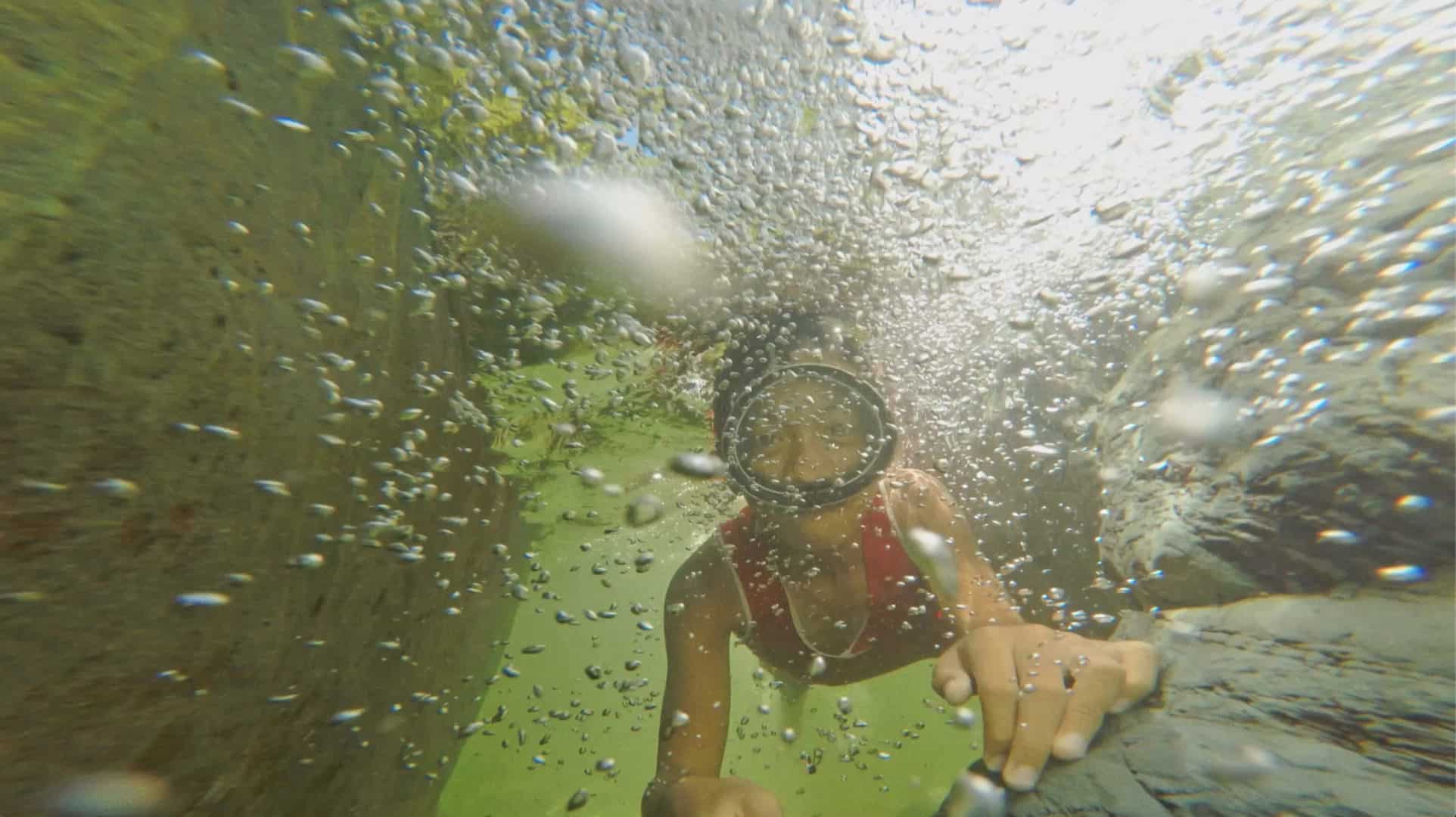
John Russel Rey “Reyboy” Paño
Who would you place the camera on though?
When we were riding a boat, I would place the camera underwater, because it has a kind of extension stick. There is a moment towards the end when Reyboy is playing with his friends in the river, in the scene where there are a lot of bubbles, we were all just playing in the river, using the camera as a play tool essentially, passing it around.
Was there any time you felt you were losing your patience? Because shooting kids is not always easy.
Not really lose my patience, but I got nervous. When Reyboy told me that he was uncomfortable being shot from a distance, I became very anxious, I did not know what we were going to do. Then he told me that he likes to go the shore and he likes to chat. So, what we did is place a microphone on both him and me, and I was not holding the camera, we were able to talk more as ourselves. I feel that most of these conversations were included in the film. I feel that due to this limitation, of Reyboy being shy and willing to be shot from afar, this approach allowed us to open up to each other, not like director and subject, but as friends. I felt that this made a difference in the film. I felt it was important to respect his wishes, and that this approach allowed the film to grow in a direction that I did not plan, but in the end, the result was a great surprise.
How much footage did you end up with and how much time did you spend editing?
We had around 54 hours of footage and we edited for about 20 months. It is not as if we edited every day for 20 months, we would have some breaks in between, for three weeks, for example. Me however, as someone who was thinking about the film all the time, I actually spend 20 months editing.
“Last Days at Sea” is an experimental documentary, essentially. Why did you choose this approach?
In the beginning, I was thinking of having a completely observational documentary, but when Reyboy told me that he was not comfortable being films by himself, I realized that we had to think of another way and also that I could learn more about them, if they were talking to me. In the original plan, I aimed at not being in the film at all and that there would only be the camera and I would observe. But when I saw that they were interested to talk to me and the rest of the crew, I realized that there is something different happening and I felt that the film is the result of this relationship between me as a filmmaker and them as the people being filmed. It was only possible for us to show how we felt for them, and for me to show what I learned from being with Reyboy if I experimented.

In the first cuts, we took out all the scenes they were addressing us (that is why it took us so long). That scene with the French fries (laughs) would not exist, that scene where the uncle is addressing the camera was filmed in a completely different way. When we realized something was missing, we tried many different things and we arrived here and I felt that this is the version that truly shows how these people really are. When I watch the film, I feel that these are the people that I met, which is important to me.
What is your opinion about the Filipino movie industry at the moment? .
I have only been exposed to Filipino documentaries recently, since I live abroad, but I feel a lot of people are doing really cool things and experimenting. I have also met many people who are doing personal documentaries also; for example, Kristoffer Brugada's “An Elegy to Forgetting” about him and his father. There is also Alyx Ayn G. Arumpac's “Aswang” and in general, I feel like we are experiencing something new, there are more people making films, also a different way , and I am quite excited for the direction that we are going. Last year, we had a documentary festival, DaangDokyu, which made me really happy.
Talking about documentaries, it seems that the category is becoming more and more popular, particularly because these films tend to prove that real-life can be more intriguing, shocking and interesting than any script found in fiction movies. What do you think?
I have also a lot of respect for fiction filmmakers, because just thinking of building up a character and making him believable is beyond me. It is a different approach. Also, I realize more and more, that, whether documentary or fiction, filmmaking comes from a personal place, the relationship the filmmakers have with the world and their interpretation, the dream of the world that they have. So, as much as there are many differences, there are also a lot of things that are similar. I will go very far if I keep talking, so I am going to stop here. (laughs)
Is there a fiction film in your plans?
(laughs) I don't know, maybe I will say now that it is not in my plans and in two years I will make one. Right now, though, I would like to make more documentaries. There is something in meeting people in real life and seeing how this relationship can be recorded and evolve with the camera on, this really interests me. I think I will be doing more documentaries in the future.
Let's say that you have no budget limit, and in general, you can shoot whatever you want. What kind of film would you shoot?
I read that sea slugs actually have memories (laughs). I would like to make a film about the disappearing memories of a small community of sea slugs, that is facing technological or industrial advancement (laughs). I know how strange it sounds, but it really got me curious, because memories are advanced brain functions.
So, any new projects you already have lined up?
Not one that I am directing, I am producing a feature documentary, by the Taiwanese producer of “Last Days at Sea”. We actually started doing the film at the same time, and it is about her relationship with her Chinese friend who lives in Europe. It is a bit more experimental than my film.


